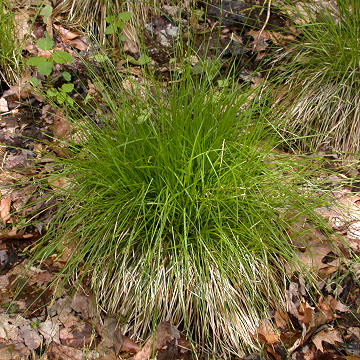

Carex bromoides - (image 1 of 5)
Taxonomy
Family: Cyperaceae
Section Deweyanae
cespitose habit, gynaecandrous spikes
perigynia 4-5.5 mm long, narrow, with spongy bases, appressed-ascending, the beak 1-2 mm, sharply bidentate
Habitat
Wet woods, wet-mesic swamps, bogs
Associates
Distribution
Quebec and Nova Scotia west to Ontario and MN, south to FL and Mexico.
Morphology
Plants in dense tufts (cespitose), from short or occasionally elongate rhizomes, to 80 cm tall; leaves slender, the largest 1.5-3 mm wide; inflorescence slender; spikes gynaecandrous; perigynia 6-15, lanceolate, plano-convex, 0.8-1.2 mm wide and over 4 times as long, strongly nerved dorsally, sometimes only weakly nerved ventrally; scale ovate-oblong, shorter than or equaling the perigynium, pale-brown or tinged orange, acute to short-cuspidate; achene lenticular, narrow, 2 mm.
Notes
Fruiting May to June
Wetland indicator: OBL
An attractive, hummock-forming sedge that gets its name from the resemblance to brome grasses once used to make brooms. The arrangement of the spikes in the thin inflorescence gives it a rather scruffy appearance. Often found on the border of swamps.
References
Curtis, L. 2006. Woodland Carex of the upper Midwest. Lake Villa, IL.
Gleason, Henry A. and A. Cronquist. 1991. Manual of Vascular Plants of
Northeastern United States and Adjacent Canada. Second Ed.
The New York Botanical Garden. Bronx, NY
Swink, F. and G. Wilhelm. 1994. Plants of the Chicago Region.
Indiana Academy of Science. The Morton Arboretum. Lisle, Illinois.
|
© Michael Hough 2010 |